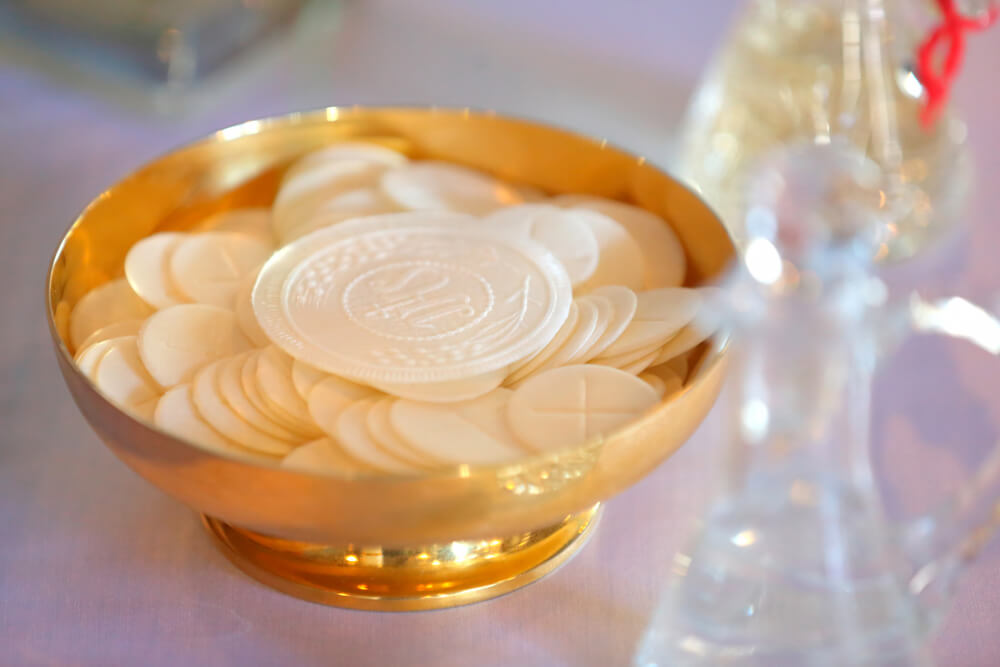On Sunday the Church celebrates Corpus Christi, the Solemnity of the Body and Blood of Christ. As Catholics, we believe that the Eucharist is truly the body, blood, soul, and divinity of Christ substantially present under the appearance of bread and wine. But many who are not Catholic may consider the Eucharist to be merely a symbol. So how can we explain the Real Presence to those who are skeptics?
Fr. Robert Spitzer, a regular contributor to A Closer Look™, recently stopped by to explain why he has found Eucharistic miracles to be so helpful in explaining the true presence of Christ in the Eucharist.
On disbelief in the Real Presence, Fr. Spitzer said, “The problem is the lack of supernatural perspective. … I actually start by talking about miracles because it is very empirical. It’s something that they can look at. There’s a test there, and this thing happened.”
Pointing to the Eucharistic miracle in Sokolka, Poland, Fr. Spitzer explained, “You can see where the host is being transformed into the actual flesh, because the sinews of the flesh are integrated into the molecules of the host. It’s so refined that NASA technology couldn’t even explain it by examination of it by electron microscope. You put that out in front of the kids and it gets their attention right away.”
Fr. Spitzer pointed out that many are skeptical of the Real Presence because they think it doesn’t make sense. But Eucharistic miracles present an example in which any other explanation of its reality is simply unreasonable. This is part of the reason these Eucharistic miracles are a good way to open people’s minds to the truth about the Real Presence.
“Look at this blood, it’s flowing from the inside to the outside,” Fr. Spitzer said of the Sokolka miracle. “And then when you tell them about the white blood cells, that you only get a proliferation of white blood cells when a tissue is alive, so just moments after death white blood cells literally disappear. Yet these white blood cells are there, prolifically, which means that tissue is the tissue that was present when that tissue is alive.”
“What would you have to do to get that piece of heart tissue?” is the question Fr. Spitzer said he asks his students. “You would have to basically beat the person so that the white blood cells embed themselves into the ventricle wall. Then you’d have to open him up before he was dead and just take a piece of his heart tissue. That is obviously going to kill him when you do this. So you gotta do it while he’s alive.”
“Now you say, ‘Well, that’s ridiculous! Who would do that?’ Precisely the point. That’s what the students get.”
Listen to the conversation with Fr. Robert Spitzer below, and tune-in to A Closer Look weekdays at 5:00 p.m. Central on Relevant Radio® and the Relevant Radio App.
Podcast: Play in new window | Download
Subscribe: RSS


